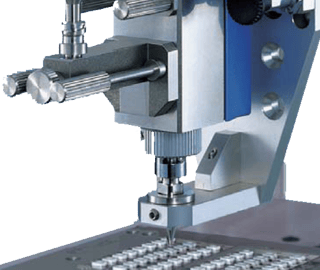This post is third in a series about fluid dispensing systems
 In a previous post, we discussed the benefits of pneumatic dispensers, which work well in many manufacturing applications. However, if the liquids you’re trying to dispense have extremely high viscosities, or varying viscosity throughout the process (as in the case of some sealants, greases, waxes, or epoxies) a mechanical dispensing system is probably the best fit for you.
In a previous post, we discussed the benefits of pneumatic dispensers, which work well in many manufacturing applications. However, if the liquids you’re trying to dispense have extremely high viscosities, or varying viscosity throughout the process (as in the case of some sealants, greases, waxes, or epoxies) a mechanical dispensing system is probably the best fit for you.
Here is an overview of mechanical dispenser systems (also called displacement systems):
Consistency and Precision
Because a pneumatic dispenser uses air pressure to dispense fluids, it will force out more fluid when it’s warm and less viscous, but less when it’s cooler and thicker. This is an issue if your process depends on consistent volume rates.
A mechanical dispenser, however, isn’t affected by viscosity because it dispenses by volume, using a rod or piston to physically force a fluid from the chamber. Positive displacement systems offer consistent and accurate volume control, regardless of variations in temperature or viscosity.
Primary Uses
Mechanical dispensing systems are widely used in the LED assembly industry. They are a good fit for any automated process that use fluids that have fluctuating viscosities or are extremely viscous.
Drawbacks
By nature, mechanical displacement systems require more daily maintenance, since the piston mechanism comes in direct contact with the fluid directly (as opposed to using air pressure). In addition, the cost of the equipment itself is higher than the average pnuematic dispenser.
If you’re not sure which fluid dispensing system is right for you, or if you’d like an expert opinion on which model will best suit your automation needs, contact our engineers at Izumi International and we’ll be happy to help you find a custom solution.


